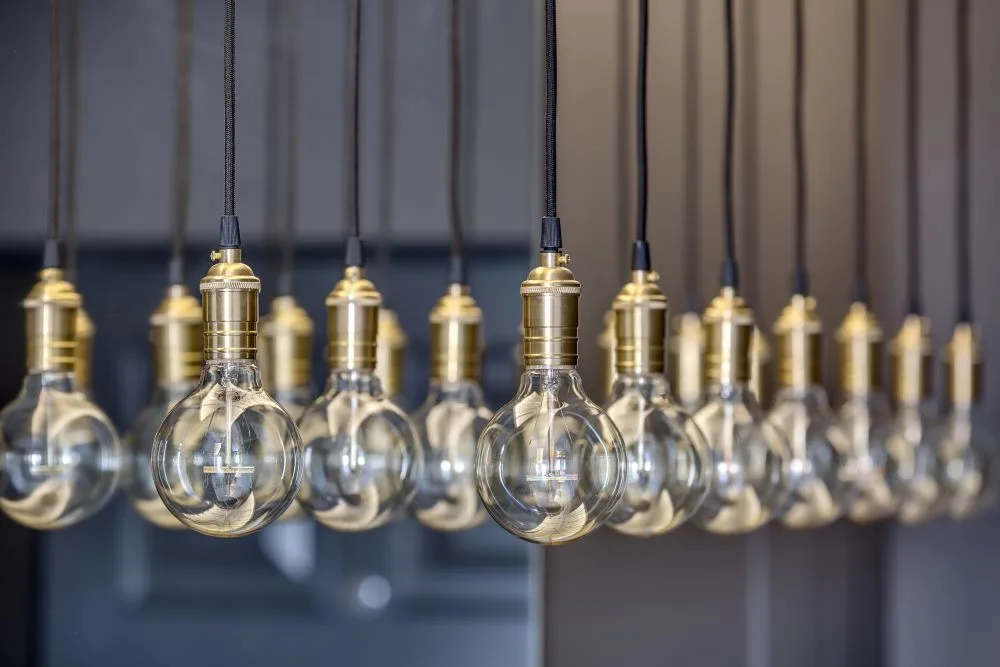When talking about lightbulbs, heat is more often than not considered to be an unwanted by-product and a waste of energy. However, when talking about heat lamps, all of a sudden, the extra heat production is appealing. However, regular bulbs and heat bulbs are two very different products.
Below, you will find a clear answer to your question regarding the use of regular bulbs in heat lamps.

Regular lamp bulbs will fit and function in heat lamps. However, they will not produce comparable heat, particularly today’s energy-efficient bulbs. To make it work, use a higher wattage, less energy-efficient bulb, use more bulbs in a single, small area, and use reflectors.
Regular Bulbs Don’t Produce Comparable Heat
Whenever you deviate from the specifically designed bulbs, you run the risk of compromising the function of the lamps. For example, if you use a regular bulb in a 3-way lamp, you end up with a one-brightness fixture. Using a regular light bulb in a heat lamp has a similar outcome.
The main purpose of a heat lamp bulb is to produce heat. The light it produces is simply an added benefit. If you are wondering whether a regular incandescent light bulb can be used as a heat bulb—well, that depends largely on how much heat is required and the size of the space you want to heat up.

Let’s start by looking at a typical incandescent lamp. Generally, these bulbs are available from 200 watts downwards and have an efficiency of around 2-5%. So, if you take a 50-watt lamp, it will give you approximately 48 watts of heat (used to heat up the elements inside to glow) and 2 watts of light.
Heat lamps, however, are available at a much higher wattage, ranging from 250 watts to 2kW and even beyond. A 250-watt heat lamp will produce 225 watts of heat and 25 watts of light.
Even though regular incandescent light bulbs produce a higher heat output, they are still much less efficient in heat production compared to heat lamps. Therefore, you will not be able to successfully use them as heat lamps unless you only require a small degree of heating.
Also, a large portion of regular light bulbs on the market are now designed with energy efficiency in mind and therefore have a lower wattage and give off much less heat.
Less Dangerous Than Heat Bulb in Regular Lamp
Putting a regular bulb in a heat lamp will just result in a regular amount of light being produced with very little comparable heat. However, the other way around—putting heat bulbs in regular lamps—can be a serious danger as the lamp circuitry gets overwhelmed by the high wattage of the heat bulb.
Ways to Increase the Heat of Regular Bulbs
1. Use the Highest Wattage Possible
Look at the capabilities of your heat lamp—likely, these will be higher than any regular lightbulb you can find—and then get the highest rated bulb you can find to match this.
2. Use Non-Energy-Efficient Bulbs
Energy-efficient light bulbs are designed to produce less heat as light is the primary purpose. Heat bulbs are the opposite, so if you are trying to match the heat bulb, go against your training and avoid those with energy star ratings.
3. Use More than One Bulb
Using more than one bulb will increase the heat of a room. If you use a 40-watt light bulb in a well-insulated 20 x 20 x 10-foot size room, it will take around an hour to heat up the room by 1 °F. Therefore, if you add the number of light bulbs, it will speed up the process and make the room hotter.
4. Use Reflectors to Contain/Direct Heat
Heat can be directed or contained by using reflectors. Similar to how the shape of a bulb directs the heat to concentrate or diffuse it, reflectors can be used to concentrate or contain the heat of a bulb to one area. The heat will be contained in the specific area, and it will feel warmer than when it is diffused over a larger area.
5. Only Use to Provide Heat to Small Spaces
Because of the small degree of heating provided by regular lamp bulbs, they will only be efficient as a heating source in small spaces.
If you are wondering about bathroom heat lamps specifically, you can look at Can You Put a Regular Light Bulb in a Bathroom Heat Lamp.
Sources
https://temperaturemaster.com/does-light-bulb-make-room-hotter/
https://everythingwhat.com/goto/550147/
https://uk.rs-online.com/web/generalDisplay.html?id=ideas-and-advice/heat-lamps-guide/

